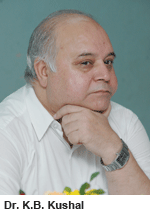Primary school education in Maharashtra (pop. 112 million) — India’s most industrialised state accounting for 25 percent of the country’s industrial production — is in pathetic condition. And this is official.
According to the latest flash statistics of the District Information System for Education (DISE) 2010-11 of the National University of Educational Planning and Administration (NUEPA), Delhi, Maharashtra ranks 19th among India’s 28 states in terms of primary schools infrastructure. This startling disclosure (Maharashtra is ranked among the country’s top three states in terms of per capita income) prompted the state government’s school educa-tion department to issue a circular (September 26) to all district collectors for immediate action to improve the infrastructure of government schools under their jurisdiction.
.gif) According to DISE, despite the RTE Act, 2009 having made it incumbent upon the Central/state governments to make schooling compulsory for all children in the six-14 age group, 223,000 children are still out of school in Maharashtra. Moreover, with a mere 3.5 percent of the state’s 100,084 govern-ment primaries compliant with s.19 of the RTE Act, which prescribes infrast-ructure norms and classroom conditions for all schools, 7 percent of government school students are fleeing to private schools annually.
According to DISE, despite the RTE Act, 2009 having made it incumbent upon the Central/state governments to make schooling compulsory for all children in the six-14 age group, 223,000 children are still out of school in Maharashtra. Moreover, with a mere 3.5 percent of the state’s 100,084 govern-ment primaries compliant with s.19 of the RTE Act, which prescribes infrast-ructure norms and classroom conditions for all schools, 7 percent of government school students are fleeing to private schools annually.
“We are aware about the weaknesses of the government school system and are determined to plug the gaps. Our schools lag behind in terms of infrastructure on a national level, but that is because the number of schools is too large with 3,568 schools with less than ten pupils. We have taken the issue very seriously and the district administrations have been directed to improve and amalgamate schools,” says J.S. Sahariya, additional chief secretary of the department of school education. According to Sahariya, government primaries’ infrastructure is in poor condition because of the total plan and non-plan annual education outlay of Rs.30,000 crore, a whopping Rs.27,000 crore is paid out as teachers’ salaries, leaving only Rs.3,000 crore for infrastructure development.
Yet despite having made Sixth Pay Commission scales applicable to government primary school teachers, the state’s primaries are experiencing an acute shortage of teachers, although over the past five years the government has promoted 300 D.Ed (diploma in education) colleges to train primary school teachers. However on Sept-ember 13, the Supreme Court-appointed Justice J.S. Varma Commission on teacher education informed the apex court that an overwhelming 249 (of 300) D.Ed institutions in Maharashtra are substandard. The Varma Commission was appointed by the Supreme Court following a petition filed by 291 institutions whose appeal against derecognition was quashed by the Nagpur bench of the Bombay high court in 2009.
 Informed academics in Mumbai ascribe the pathetic condition of government primaries in Maharashtra to the indifference and apathy of the school education department. According to Dr. K.B. Kushal, regional director (Maharashtra and Gujarat) of the DAV group of schools, the department should solicit the assistance of NGOs and private trusts to bring children back into government schools. “Like many others, I’m uneasy about the condition of primary education in the state. Maharashtra’s low ranking on the quality of primary school infrastructure is due to delays in administrative approvals and execution. The provincial and district education officers lack the authority to make managerial and administrative decisions. In addition, some district-level personnel do not have the requisite qualifications for the positions they hold, and are, therefore, professionally handicapped to disc-harge their duties. Moreover, lack of comprehensive and transparent policy guidelines on teacher recruitment is hampering the quality of education in primary schools,” says Kushal.
Informed academics in Mumbai ascribe the pathetic condition of government primaries in Maharashtra to the indifference and apathy of the school education department. According to Dr. K.B. Kushal, regional director (Maharashtra and Gujarat) of the DAV group of schools, the department should solicit the assistance of NGOs and private trusts to bring children back into government schools. “Like many others, I’m uneasy about the condition of primary education in the state. Maharashtra’s low ranking on the quality of primary school infrastructure is due to delays in administrative approvals and execution. The provincial and district education officers lack the authority to make managerial and administrative decisions. In addition, some district-level personnel do not have the requisite qualifications for the positions they hold, and are, therefore, professionally handicapped to disc-harge their duties. Moreover, lack of comprehensive and transparent policy guidelines on teacher recruitment is hampering the quality of education in primary schools,” says Kushal.
According to him, the best solution is for the state government to promote public-private partnerships in education and rope in education NGOs and private charities, trusts and well-managed private schools to help government schools sharply raise student learning outcomes and teacher training standards. “But in the final analysis, the Central and state government outlays for primary education have to be raised substantially and immediately. To allocate Rs.3,000 crore for capital expenditure and infrastructure development — Rs.3 lakh per school — is to invite disaster,’’ says Kushal.
But in India’s most industrialised state where politicians are preoccupied with primitive capital accumulation, and the middle class has fled en masse from them, there’s none left to articulate the abysmal — and worsening — conditions of government schools.
Praveer Sinha (Mumbai)